EBR charges a service fee to manufacturers to produce ebike reviews and videos, this began in 2018. It’s the same flat fee for each bike, and it helps us to keep the site going while limiting ad clutter. We appreciate the opportunity to serve you with our opinions and data but respect your right to know that we receive compensation :)
The Mountain Bike from DJ Electric Bikes is a clean looking and affordable electric bike that comes stock with most of the common features needed to tackle modest off-road terrain. The Top Gun spring suspension does a good job of soaking up small bumps and reduces overall jarring, though the forks don’t come with lockout or rebound adjust — only individual preload adjusters on the top of both side (which should be adjusted in tandem). This bike also comes stock with plastic mud-flap style fenders, front and rear 160 mm mechanical disc brakes, motor inhibitors, a flick bell, an adjustable rear-mounted kickstand, a removable battery with 624 watt hours of juice and a 500-watt Bafang hub motor. While nothing here is extraordinary, that’s a fair amount of features for an electric bike that only costs $1,399 (The price was recently raised from $1,399). DJ Electric Bikes is a direct order only company, which means there’s no brick-and-mortar stores where potential customers can check out the bikes in person before making a purchase. When it comes to direct order companies like this, there’s generally a handful of pros and cons that come along with the territory. For starters, and potentially the greatest pro of this setup, the cost is commonly far less than with brick-and-mortar stores. This makes sense given the fact there’s far less overhead — no shops, no inventory to keep in stock around the country, fewer employees, etc. But I’ve found there’s also a few major drawbacks here as well. The biggest issues I run across with direct order is mismatched pieces that don’t quite fit (and sometimes even discrepancies between advertised specs and what is actually delivered) and a communication barrier. Thankfully, with DJ Electric Bikes, this was not the case at all. Everything fit together perfectly, including the fenders (which I find can be a sticky point), and assembly was surprisingly smooth. Regarding the communication barrier that can sometimes come with direct order, it was non-existent here, and furthermore, I was able to get a hold of the owner, Daniel, every time I called. At first I thought maybe I was getting special treatment for the review, so I called from a few different numbers just to test out the customer service and I have to say it is far above average. I think this is an important point when it comes to direct order because sometimes the website may not have all the information about a given bike, so it’s nice to be able to ring up the company and have the actual owner pick up the phone. Nice. On the flip side of this “positive coin” though, this bike only comes in one frame size and one color: 19 inches and black with some red accents. The stem is adjustable angle at least, so that should be able to accommodate a wide range of riders heights and desired riding styles. But for those looking for a smaller or larger version, or one a different color, unfortunately that’s not available. This bike weighs in at almost exactly 55 pounds, which is on the medium side for electric bikes with fenders, a light and suspension fork, but most of the weight is towards the back, so it does a feel a little back heavy. Even still, I didn’t notice any speed wobbles or frame flex, so that’s good news.
Driving this bike to a top pedal assist or throttle-only speed of 20 mph is a Bafang 500 watt hub motor with 65 newton meters of torque. Frankly, I don’t have much experience with the higher end motors like Bosch, but I have come to appreciate the Bafang motors. By the way, this is Brent conducting the review vs. Court who has done a ton of mid-drives and fancier models. And so, this motor, like most 500 watt hub motors, is pretty quiet while in operation, but because of its silver finish it does stick out like a sore thumb (the spokes, hub, and frame are all black). One of my favorite things about this bike is the throttle. It’s live from 0 mph and can get you to top speed from pedal assist modes 1-5 (so it isn’t limited based on the assist you choose, but by how far you press the throttle). This is great when I’m starting from a dead stop and trying to quickly cross the street, or starting on an incline. Because this bike has a cadence sensor, there’s about a .5 second to 1 second delay from the time I start pedaling and the time the motor actually activates, so being able to override that function with the throttle is great, especially if I haven’t shifted to a lower gear when slowing down and stopping. The same is true for stopping, I could easily override assist and throttle by pulling either brake lever, because they have motor inhibitors built in. Also, this a 12 magnet sensor here, so it will be a little more sensitive compared to a 6 or 8 magnet sensor which are commonly used on cheaper e-bikes. The throttle has also proven quite handy for getting up stairs. While this bike does have Walk Mode, I prefer using the throttle to ascend the stairs to my apartment. It’s far easier than carrying the bike up, which makes me really appreciate this feature. I do want to caution though that because the throttle is live at 0 mph, an accidental activation can result in the bike flying away. It’s best to turn the bike off when you are mounting or dismounting and to remove the battery pack before trying to lift the bike. Last thing I want to mention about the throttle is that it offers variable speed, which means I can precisely select my desired speed and hold it there. I also like that the trigger throttle design stays out of the way when steering and handling the grips firmly, compared to a half or full-grip twist throttle.
Powering the bike, the integrated headlight, and the backlit LCD display panel, is a 624 watt hour silver fish style Lithium-ion battery pack that weighs in at 9.4 pounds. This locking battery pack is removable, which is great because it means it can be charged on or off the bike, and it can also be stored in a cool, dry location to help extend the cell life. There’s also a USB Type A charging port on the side — a feature I love because it allows me to use it as portable power bank to charge up my phone, tablet and other electronic devices. The charging port on this battery is at the top, which keeps the cord and plug out of the way of the cranks. The biggest downside to this battery is that it’s positioned behind the seat post, making the bike back-heavy, and the saddle must be removed before the battery will slide out. Thankfully there is a quick release for the saddle, but it’s still an extra step for removing the battery and can be a pain trying to position the saddle perfectly before every subsequent ride. In order to actually use the motor or LCD display on the Mountain Bike, the battery must first be turned on. This requires the key to be inserted, something I’m not too keen on. It does add a layer of security and helps ensure the bike can’t be turned on and ridden away by a opportunistic passerby, but it also means the key can get in the way when pedaling (or jingle around if you’ve got a keychain attached). I’ve found that the key can snag on my shoe and/or ankle while pedaling, but at least the plastic piece on this key folds down to help keep it as out of the way as possible. The charger for this battery is a pretty standard one and puts out 2 amps, but it does have a three prong connector that inserts into the battery as opposed to just a single prong as well as a sturdy end piece vs. all plastic. I also have to mention the headlight here as the beam pattern is actually pretty good and could even be used to illuminate my path during a night ride as opposed to simply increasing visibility. The headlight is attached to the arch on the suspension, which means it will rattle around more compared to it being mounted on the frame itself.
Activating the control center on the DJ Mountain Bike is easy enough and requires a long press of the power button on the control pad, which is located on the left side of the handlebars along with the control center itself. The control center is a J-LCD King Meter and is not adjustable without tools, so angling it to avoid glare isn’t really possible unless you leave it loosely connected, and neither is removing it when parking it a public bike rack — this could leave it vulnerable to getting scratched up and just more sun and rain wear over time. Though the screen size is somewhat small (a smaller screen size might be nice for those looking to fly under the radar, but again, the silver finish on the hub motor and big battery pack does make this bike pretty clearly electric), it does offer a fair amount of information, including tripometer, odometer, current speed, average speed, max speed, battery level (4 bars) and assist level (0-5). Regardless of what assist level the bike is left in when it’s powered down, it reverts back to assist level 1 when it’s started back up. Personally, I’d prefer it stayed where I left it, but this isn’t a huge deal. In power assist level 0, the throttle and pedal assist are dead. In order to use the powered functions it must be in assist level 1-5. Holding the up arrow and mode/power button turns on and off the backlight and headlight, holding the down arrow activates walk mode and holding the up and down arrow enters into the settings menu, where the top speed can be adjusted from 7.5 mph all the way up to 24.9 mph. The stock settings have the max speed at 20 mph. Switching between assist levels doesn’t really feel like it’s changing the power output of the motor, but simply limiting the top speed of the motor — almost like a shortcut to the settings menu. For instance, pedal assist level 1 tops out at about 10 mph, level 2 at around 13 mph, and so on. Again though, the throttle can override this and get this bike up to max speed relatively easily.
There’s a few other things I want to point out there with this bike. The fenders are plastic, and they do rattle around a bit. I’ve tried adjusting them but that’s just kind of the name of the game with plastic fenders that are longer and only have one support. On the plus side, they’re lightweight and won’t rust like steel fenders. I like that the Mountain Bike has a double-sided chain guide as this should help keep the chain from popping off, but it is made of plastic so it will likely be susceptible to breaking on a hard strike. This is really more of a light trail bike than a full mountain bike, but it should provide some comfort and traction that pure urban bikes would not. Some of the cables are internally routed which helps to reduce clutter and those that are exposed are black, so they blend in with the bike pretty well. The fenders, spokes and suspension are also black and the color scheme with the red accents works well, although it will reduce overall visibility. This is definitely a value buy at $1,399, but I feel like even though most of the components are entry-level (such as the entry-level 7-speed Shimano Tourney drivetrain) it still has the necessary features to putter around town and even tackle some modest trails. For those looking for an affordable electric bike that can can go on and off road, this might be one to consider. I do appreciate the disc brakes, but they use mechanical activation vs. hydraulic which means they require more hand strength and can stretch over time… but tuning is a lot easier for most riders who have access to an allen key set. I want to thank DJ Electric Bikes for partnering with me on this review, and if you folks have any questions I’ll do my best to answer them! It’s worth noting that the company is Canadian and has two shipping centers, on the West and East Coasts, and that they offer a generous 14-day return policy with one year comprehensive warranty. Pretty good for a smaller family run business :)
Pros:
- Motor inhibitors automatically cut power to the motor whenever the brake levers are depressed, this helps to ensure the shortest possible stopping distance and can be used to manually cut over the motor when navigating technical terrain
- Twist throttle is variable speed and is live from standstill, which is good for getting going from a dead stop and especially when trying to start on an incline
- Headlight is better than others I have seen at the entry-level pricepoint and the beam pattern is tight enough for it to illuminate a path while riding at night as opposed to simply increasing visibility
- Most of the wires are internally routed to help minimize clutter and give the bike a cleaner look than if all the wires were exposed and running along the frame
- The color scheme seems pretty well thought and just about everything is black including the wires, spokes, suspension, battery and grips, the red accents add a nice splash of color without overdoing it
- Comes stock with fenders and a bottle cage which are great for helping to minimize the amount of mud and dirt that gets kicked up while riding and staying hydrated
- Adjustable angle stem should help accommodate a wider range of rider heights and riding styles, it can be lowered for a more aggressive feel or raised for more relaxed riding, make sure it stays tight so you don’t get slip if riding hard off-road
- Front wheel and seat post have quick release levers for easy and quick disassembly, also makes removing the battery easier compared to if the seat post was tool adjust
- 12-magnet cadence sensor has higher resolution compared to an 8 magnet cadence sensor, which should help the motor start and stop more quickly when the cranks start and stop spinning
- Double-sided chain guard helps prevent the chain from popping off towards the inside and outside, as well as keeping some of the chain grease from getting on pants/skirts/legs
- Wide, relaxed saddle is pretty comfortable and also has rubber bumpers to add a little bit extra cushion while riding
- Battery has a USB Type A port to charge accessories either on or off the bike, battery also the charging port towards the top to keep the cord clear of the cranks
- Adjustable-length kickstand is well positioned towards the rear of the bike and stays clear of the cranks, this is good for when the bike is stored in a tight place and needs to be dragged or rolled backwards
- Steel roll cage protects the derailleur and power cable from damage in the case the bike is dropped on its right side, might also help a little for strikes on tight sections of trail
- 500 watt hub motor is powerful enough to make this bike fun and zippy off-road but still efficient enough not to quickly drain the battery, apparently it can peak out around 750 watts
- Assembly and customer service are above average, the bike was extremely easy to put together and everything fit nicely, and phone calls to the company are quickly answered
- Price tag of $1,399 is in the value buy range and makes this a relatively affordable electric bike
Cons:
- Most of the components are entry level and generic, including the 160 mm Tektro mechanical disc brakes, Top Gun spring suspension, SIS Index trigger shifter, 7-speed Tourney derailleur, etc.
- Adjustable angle stem only has one screw to keep it locked in place, making it susceptible to moving around on hard hits, some higher quality adjustable stems have two screws for more rigidity
- Headlight is located on the arch of the suspension, making it unsprung weight and therefore susceptible to bouncing around more compared to if it were fastened to the frame itself
- Suspension is generic and doesn’t offer lockout or rebound adjust, two differently shaped knobs on each side of the suspension must be individually adjusted for preload adjust
- Tires don’t have puncture protection, and since this is a mountain bike it means flats are far more likely on certain trails with thorns and sharp roots than more expensive tires that come with a protective lining
- Cadence sensor is a bit slower recognize crank movement and has about a .5 to 1 second delay from the time pedaling starts and stops to the time the motor actually delivers power and cuts off, this can make navigating single tracks at slow speeds difficult, especially because it also doesn’t stop instantly
- Double-sided chain guard is made of plastic, making it vulnerable to breaking on a hard strike vs. alloy
- Battery is located behind the seat post and in conjunction with the hub motor this makes the bike a little back heavy and rather unwieldy to carry, can also result in frame flex and speed wobbles for heavier riders but is way better than a rear rack battery
- Key must be left inserted into the battery while in operation, this can result in ankle and shoe snags with the key while pedaling, it may also jingle around if you have a keychain attached
- Seat post must be fully removed before the battery can be taken off the bike, this is an extra step compared to other electric bikes with a downtube mounted battery
- Hub motor has a silver finish which makes it stand out compared to the rest of the bike (which is black) and makes it clear it’s an electric bike even at a glance
- Control center isn’t adjustable without tools or easily removable, making eliminating glare on the fly pretty much impossible, and also leaves the screen vulnerable to scratching when it’s left at a public bike rack
- Mechanical disc brakes don’t offer as much stopping power as hydraulic disc brakes, and while this isn’t the heaviest electric bike on the market, more stopping power is almost always better
- Only one frame size and frame color seriously limits the options for fitting and style preference, and may altogether eliminate some rider heights from being able to comfortably fit the 19 inch frame

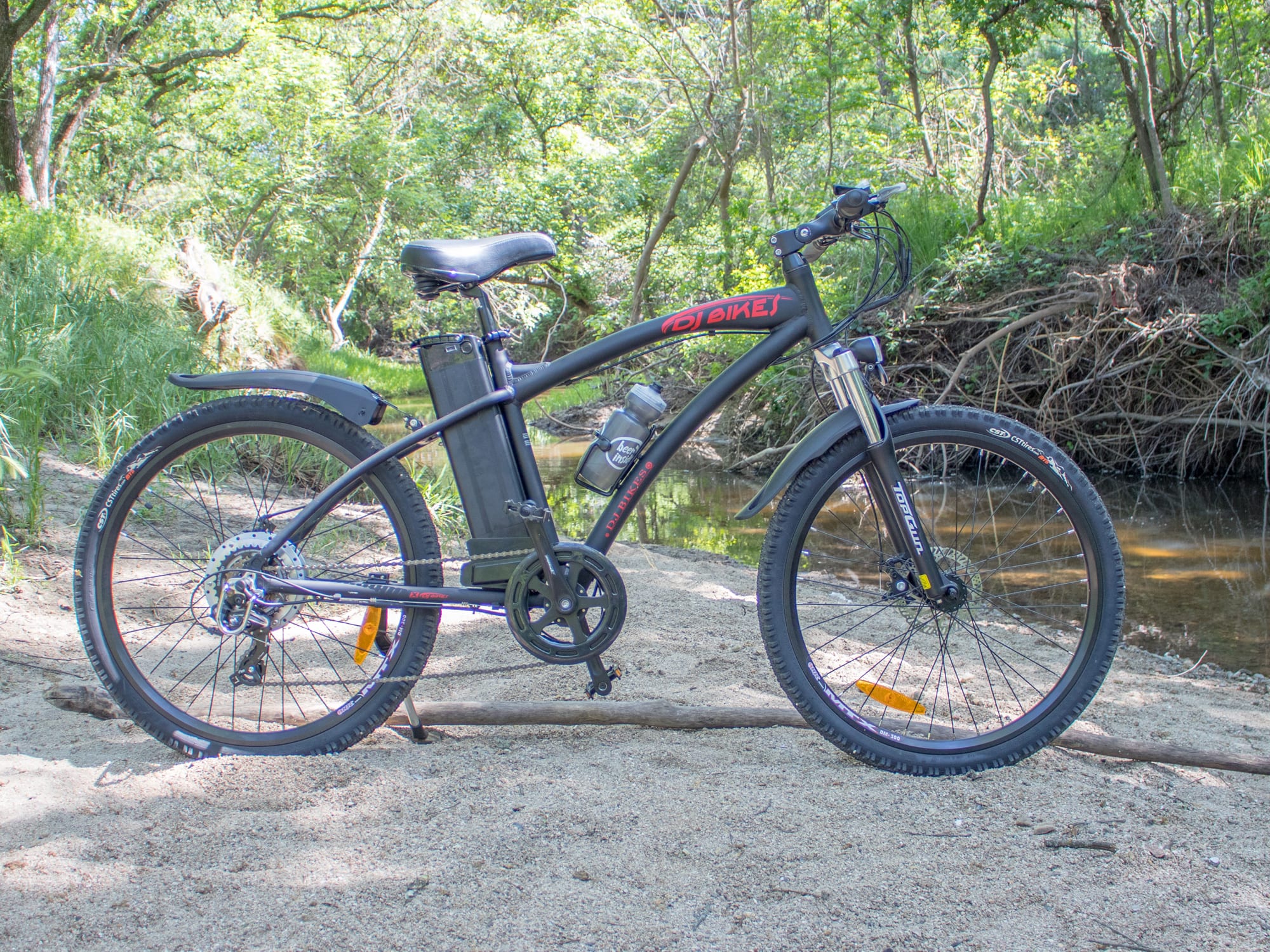
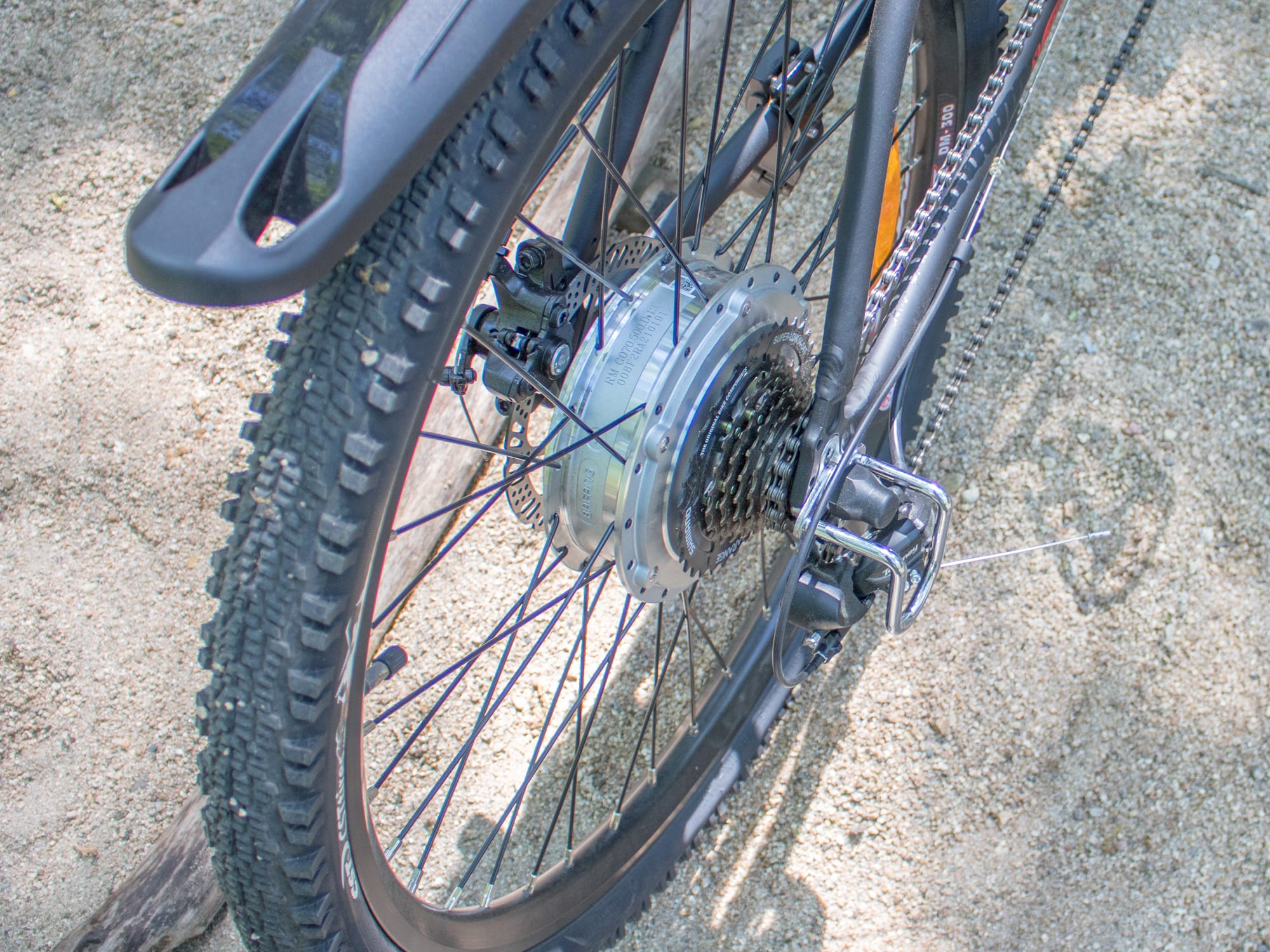
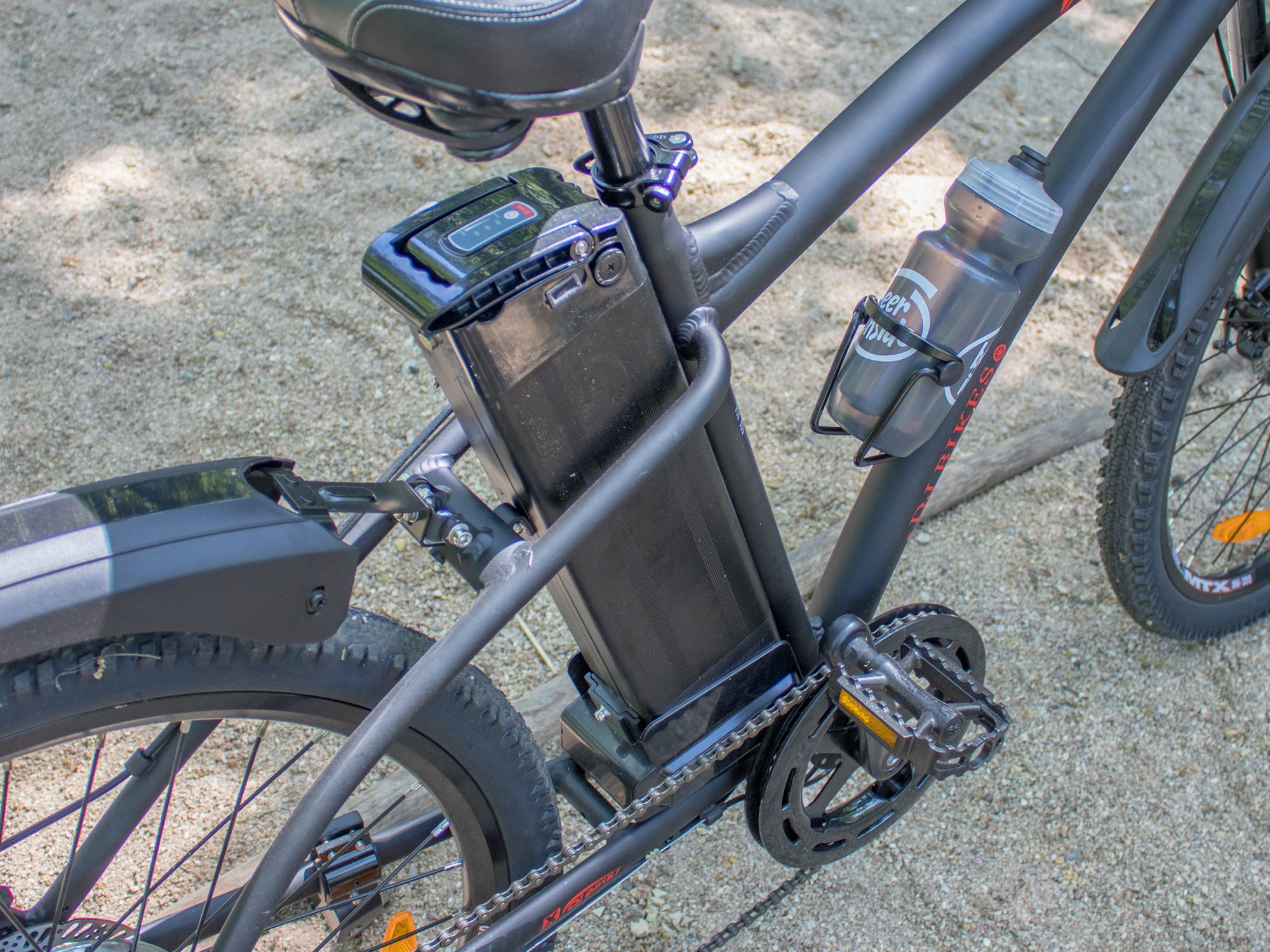
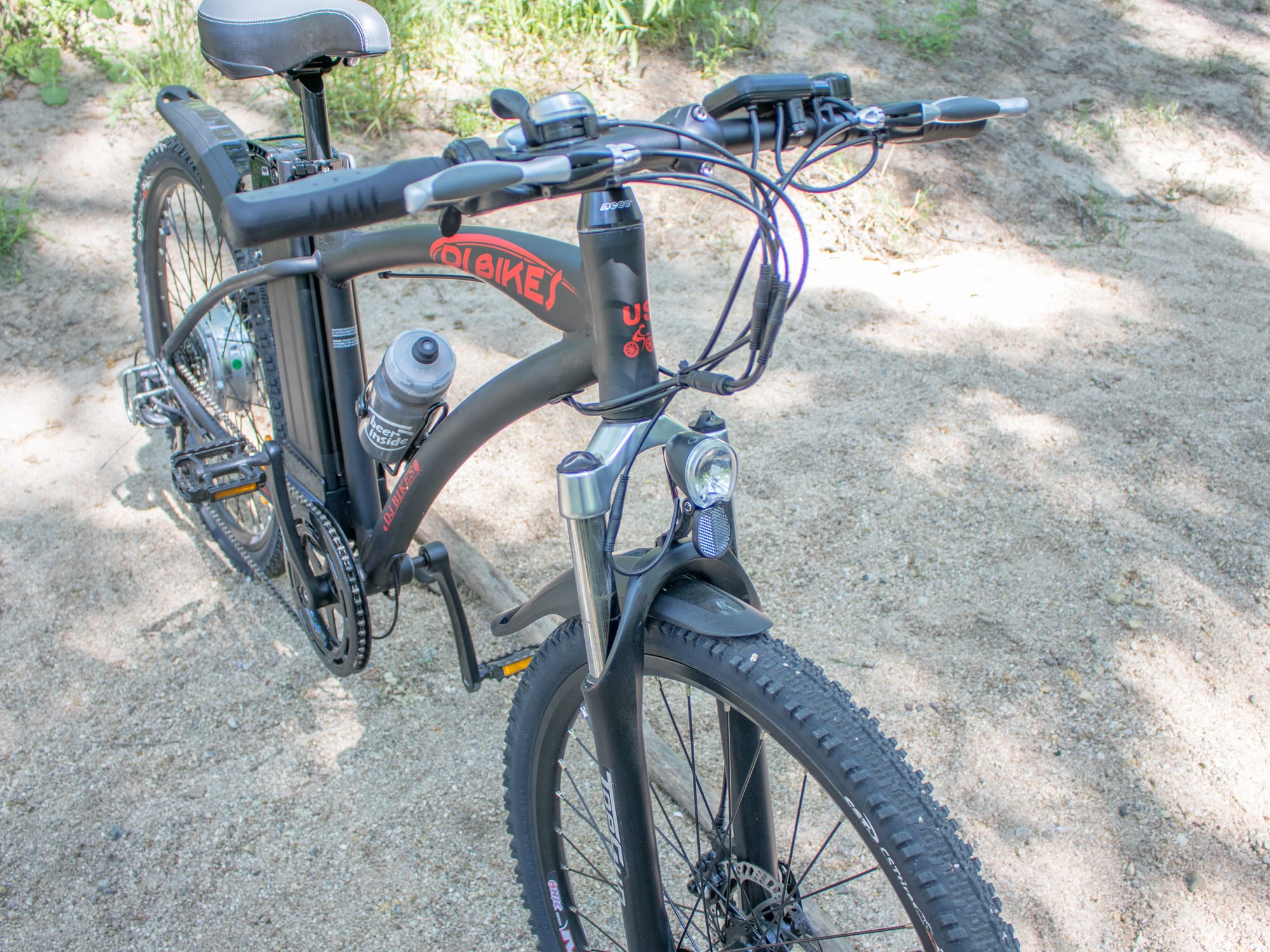
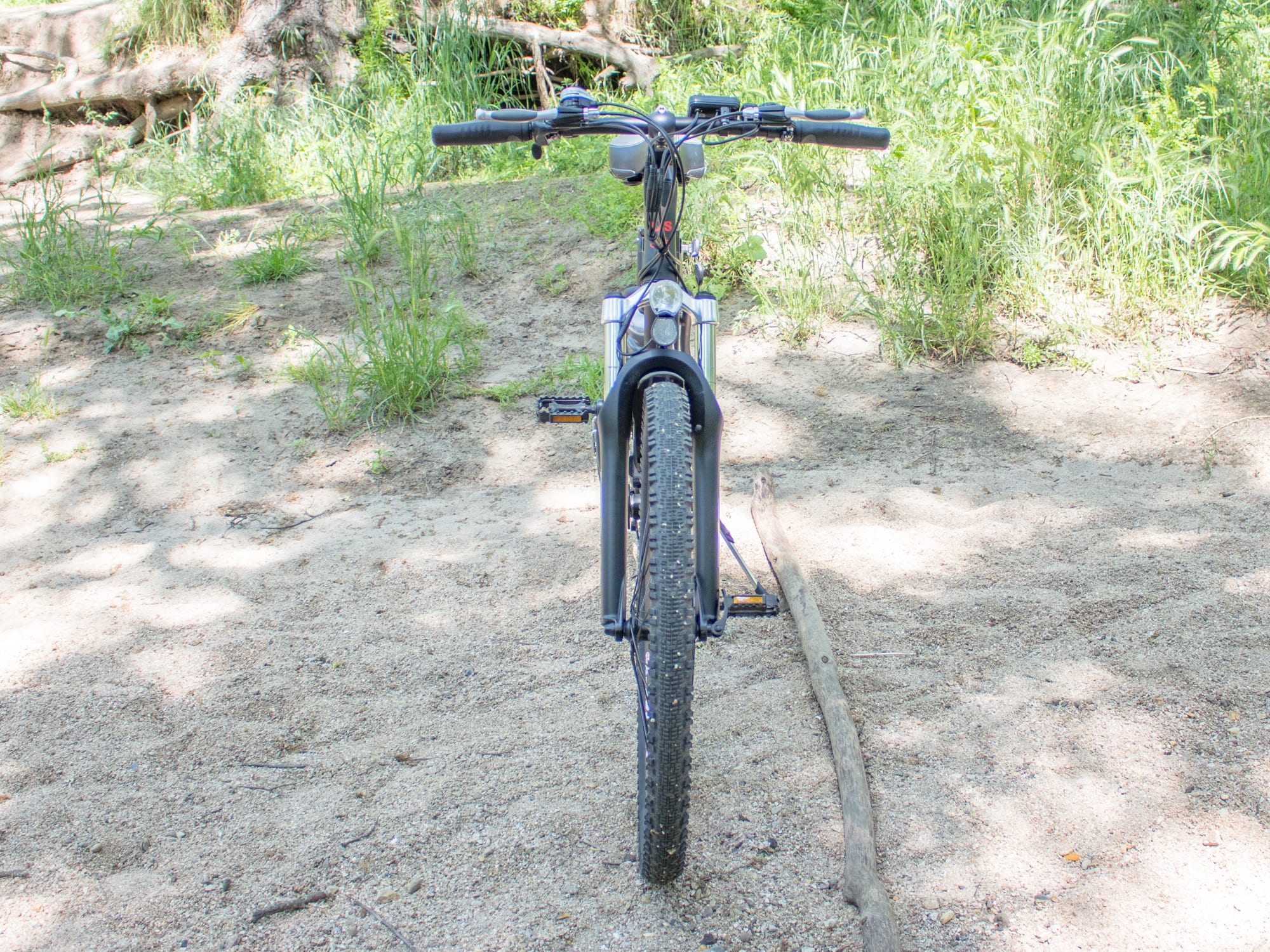

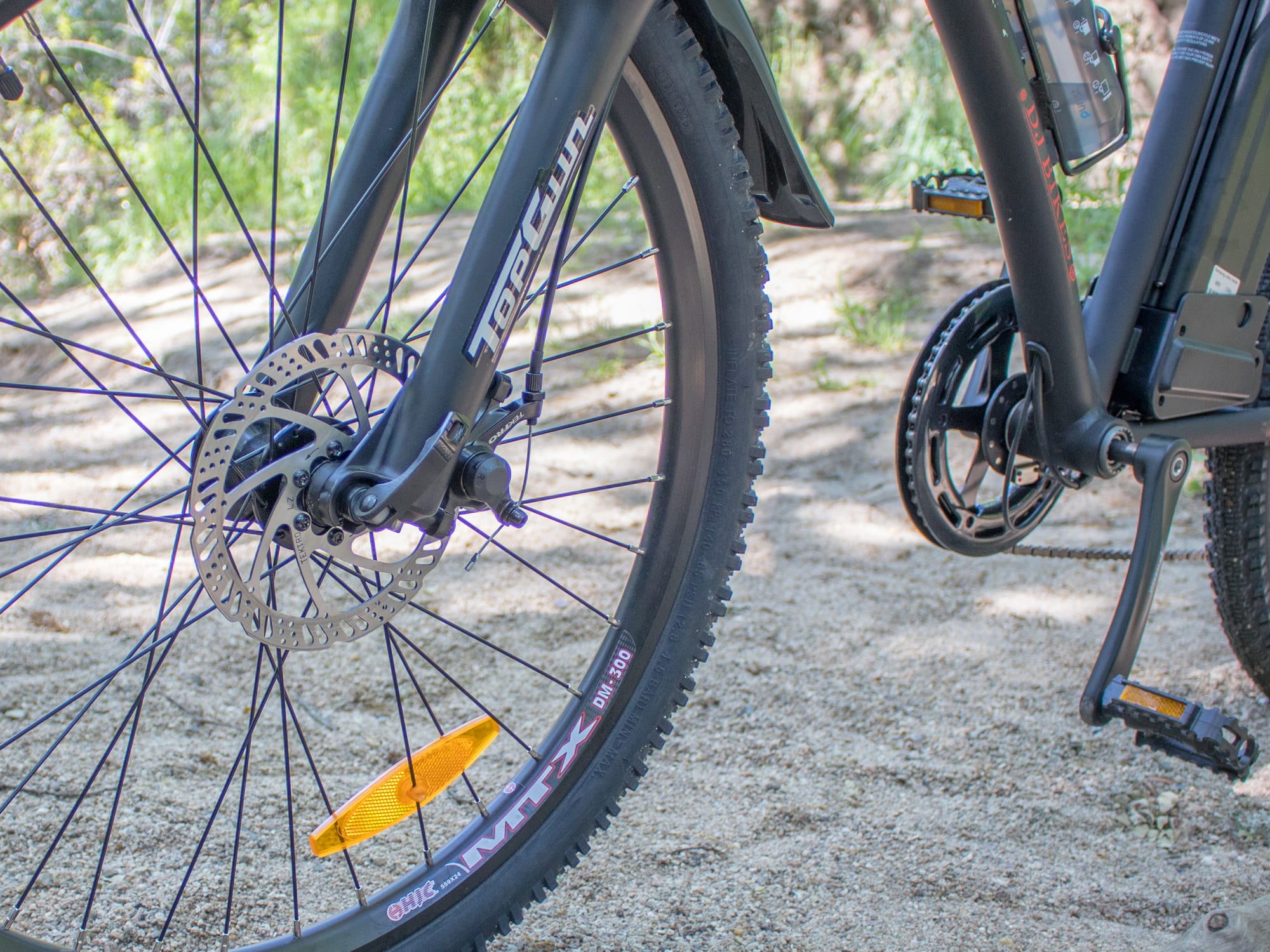

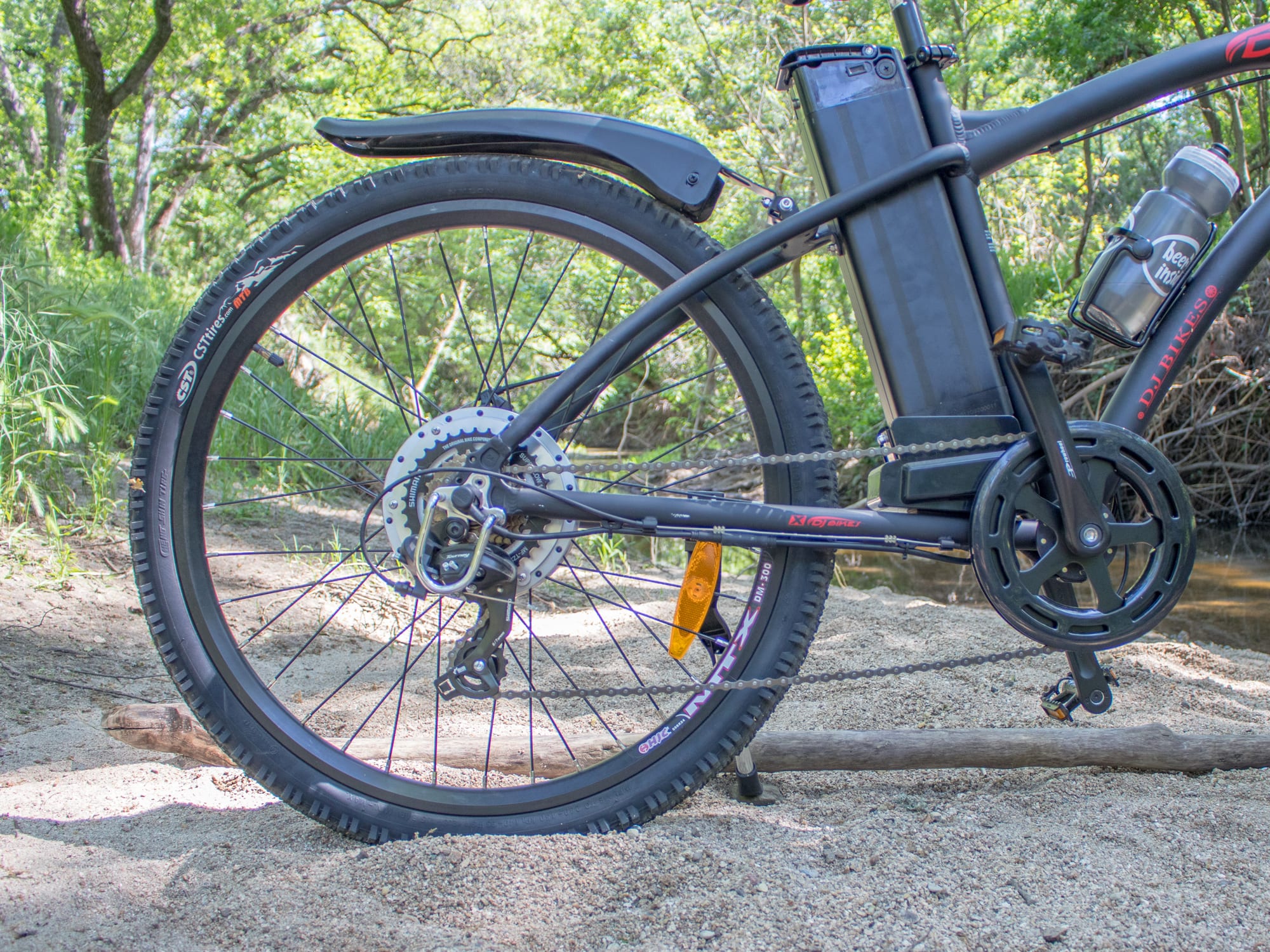
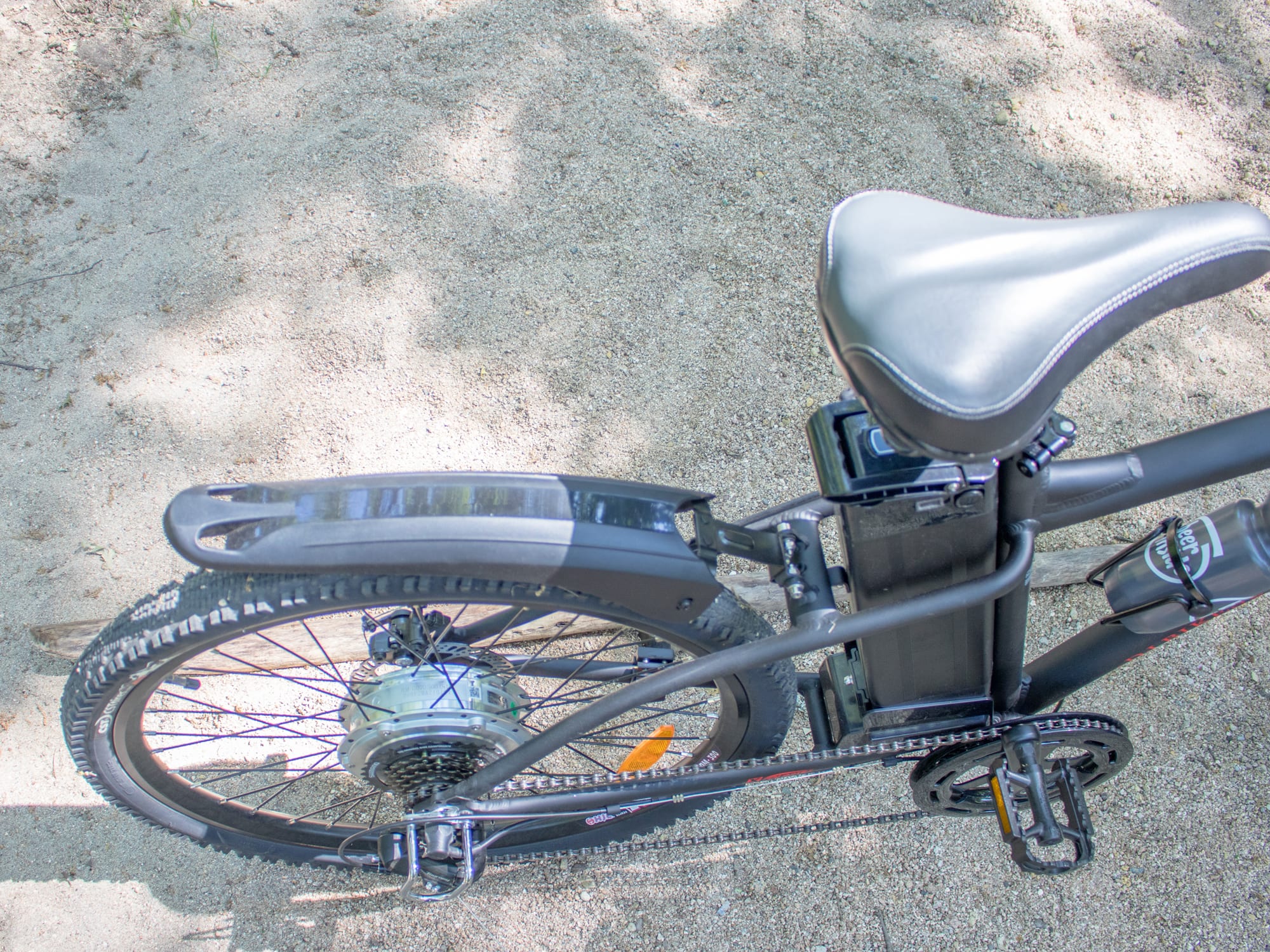
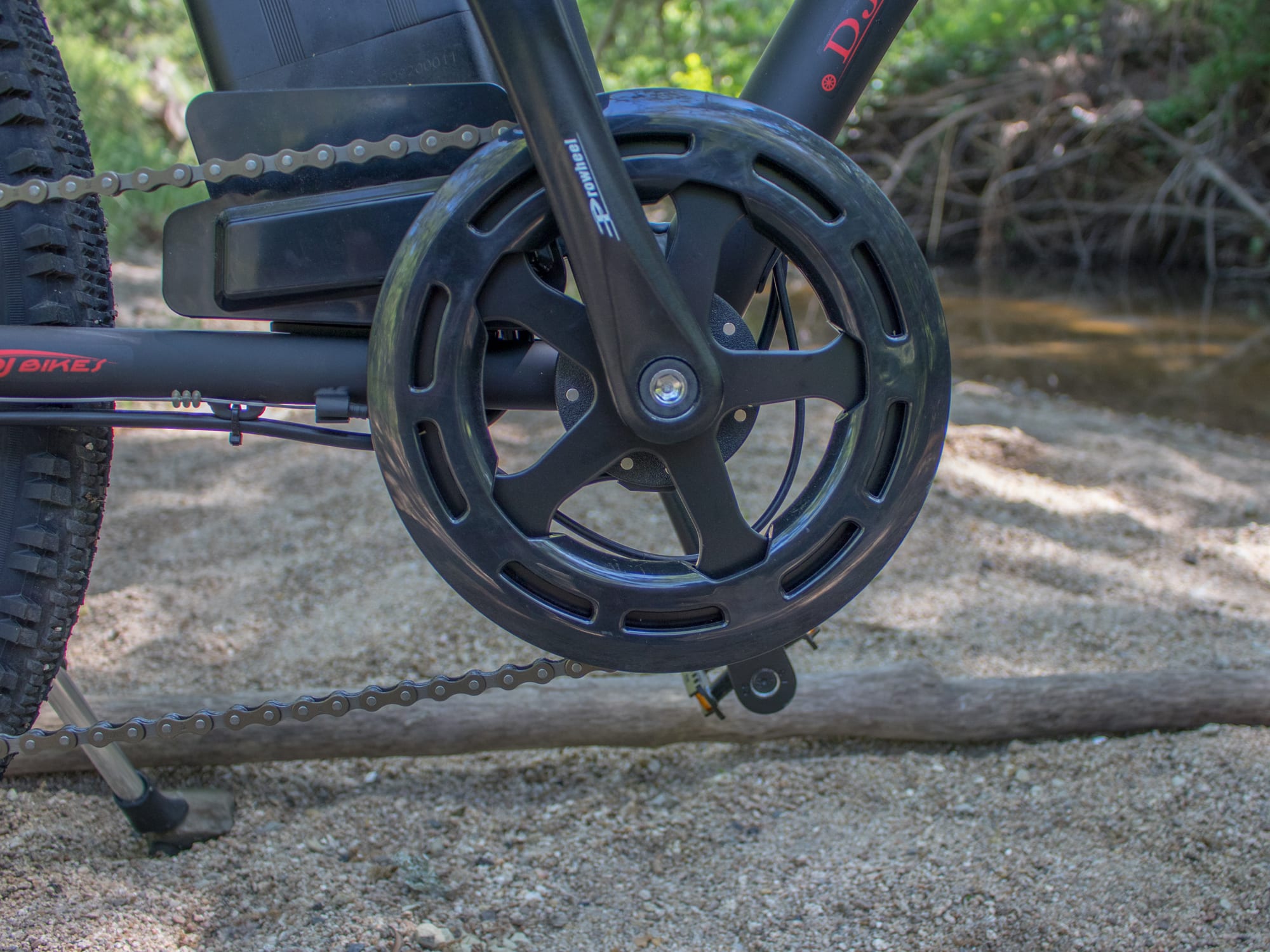
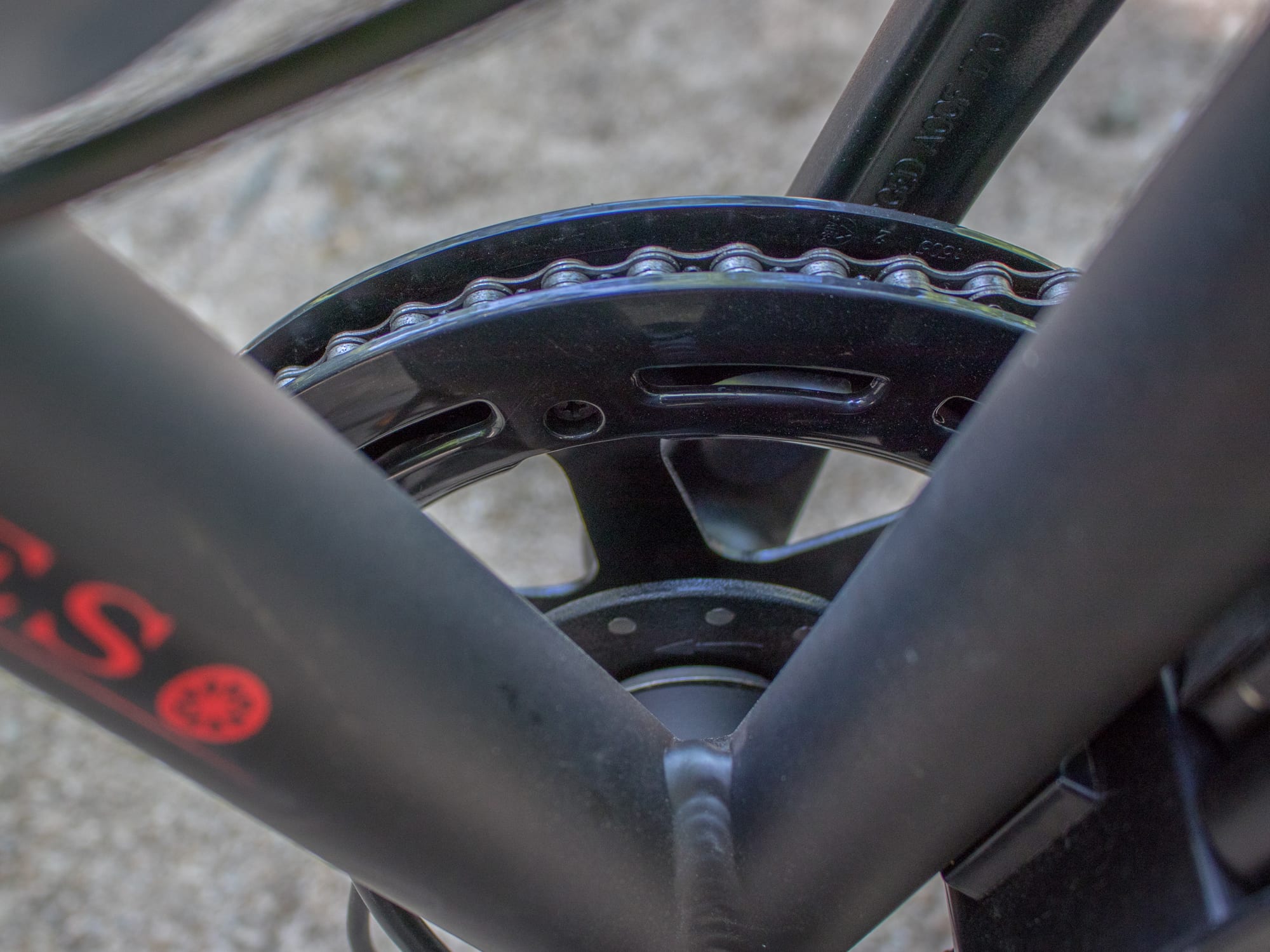
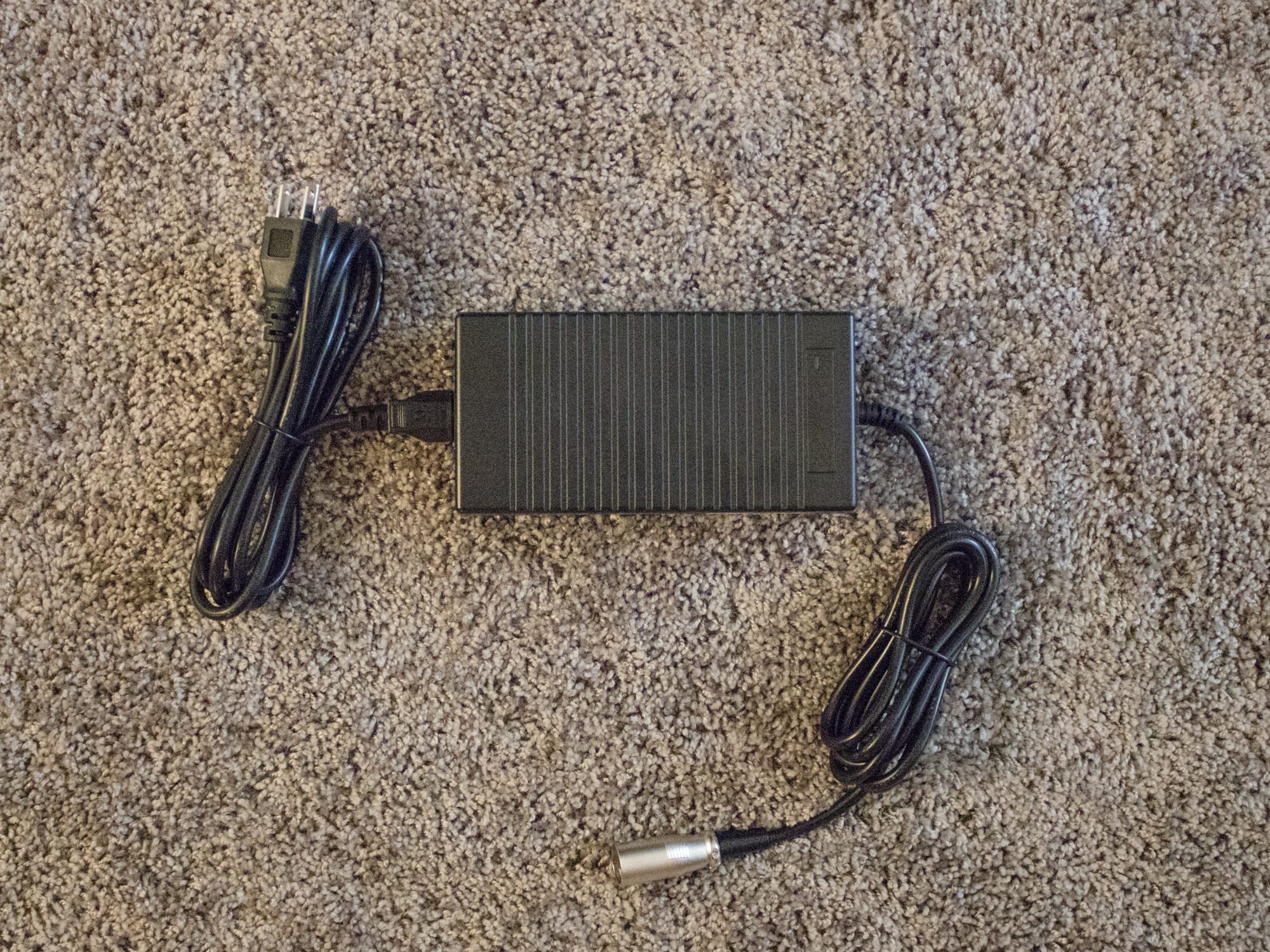
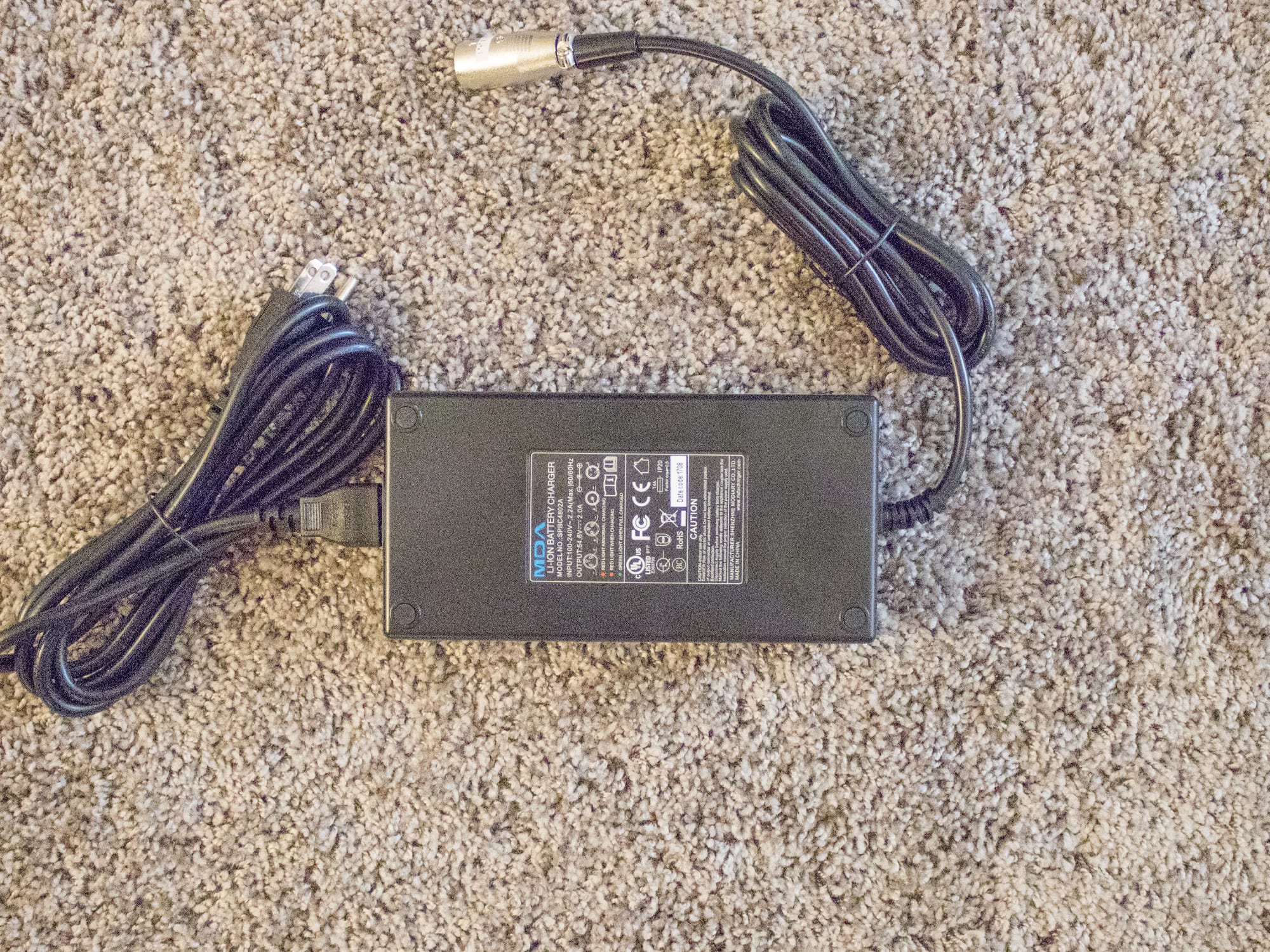

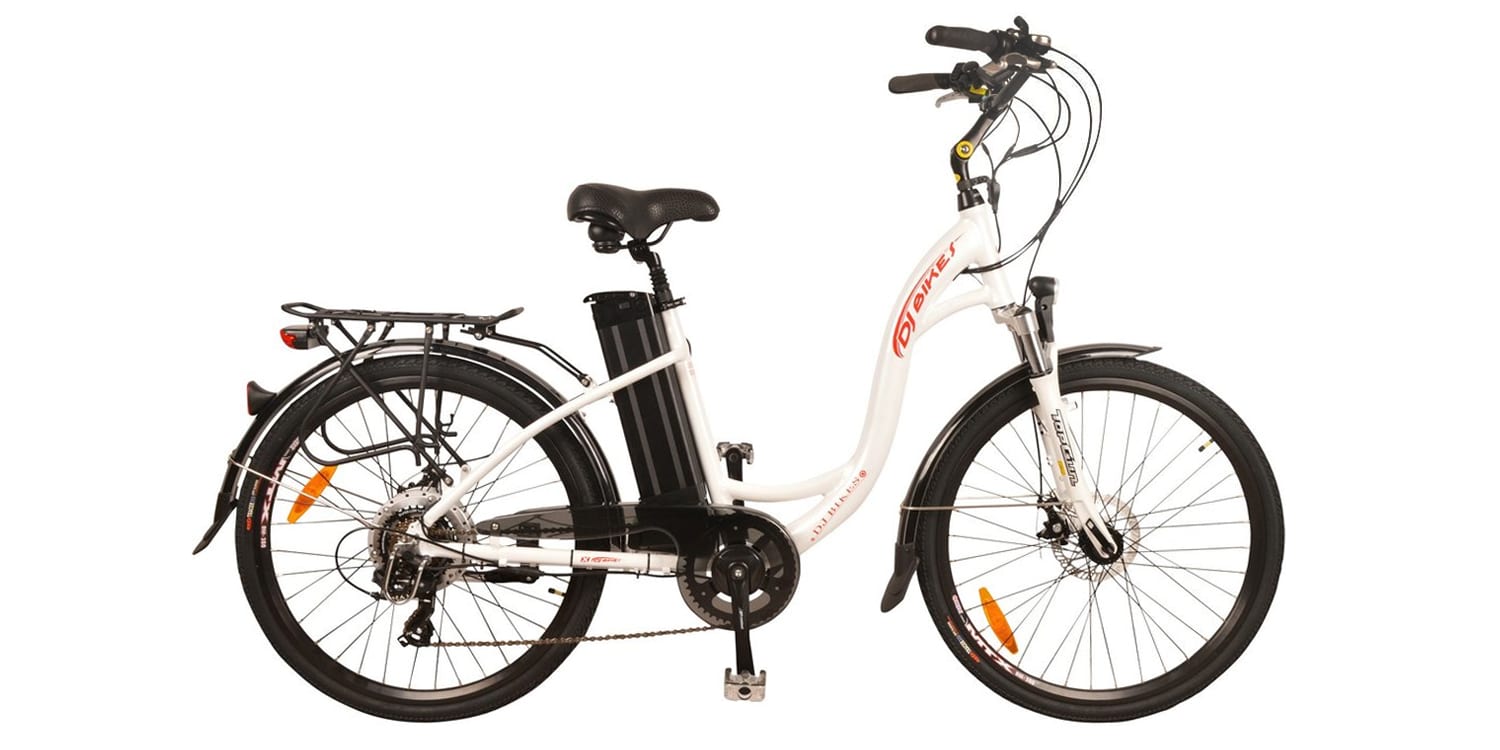
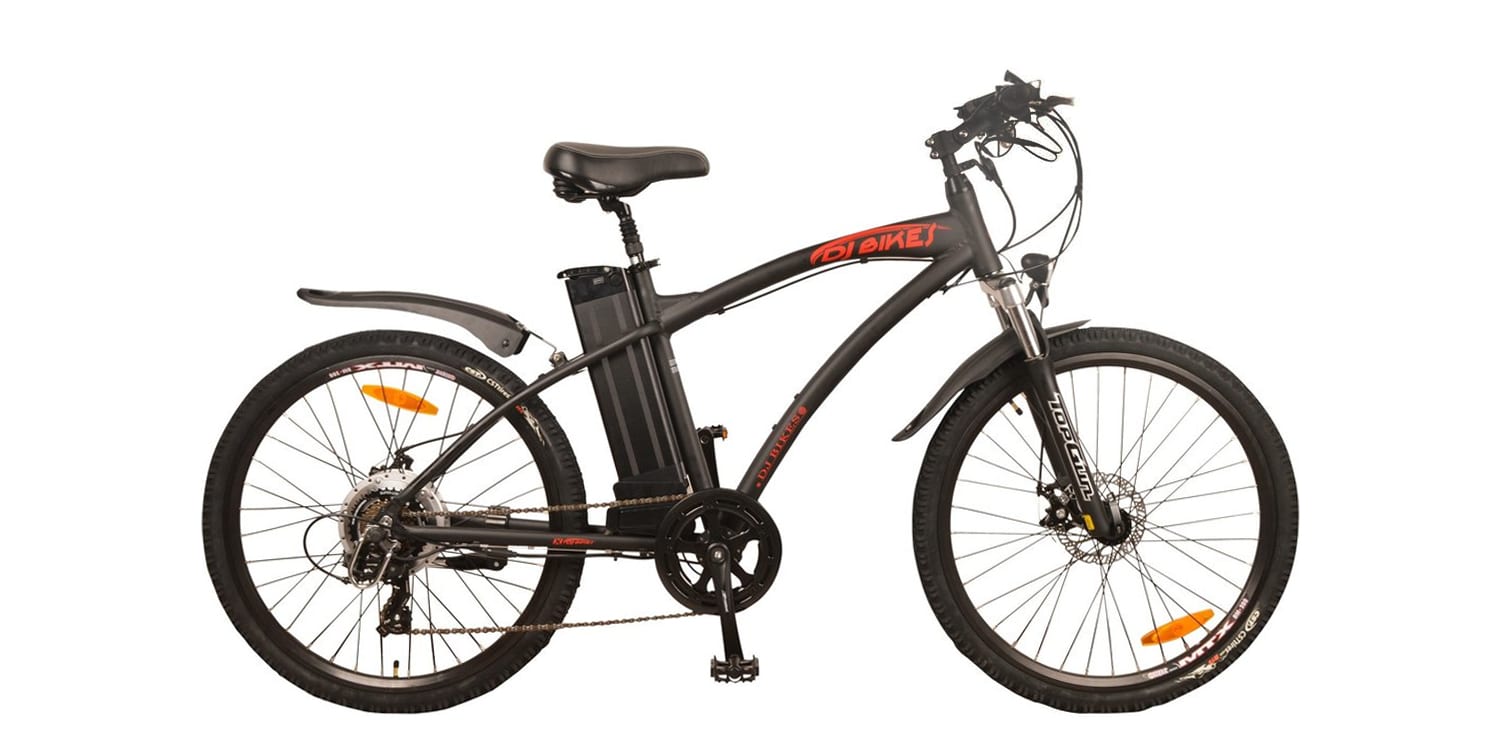
John says
Could you provide a comparison of the RAD MINI 750 Folding bike and the CJ 750 mini (20″ fat tire) bikes they seem to have the same equipment etc. CJ Offers standard racks, fenders, and a better seat, at a better price. What l’m I missing as far as the mechanical comparisons to tell which one is the better bike aside from the cost and option upgrades? Thanks.